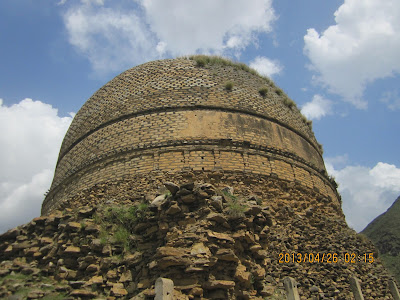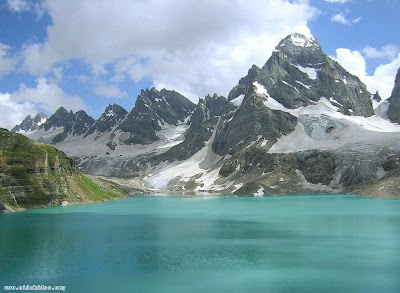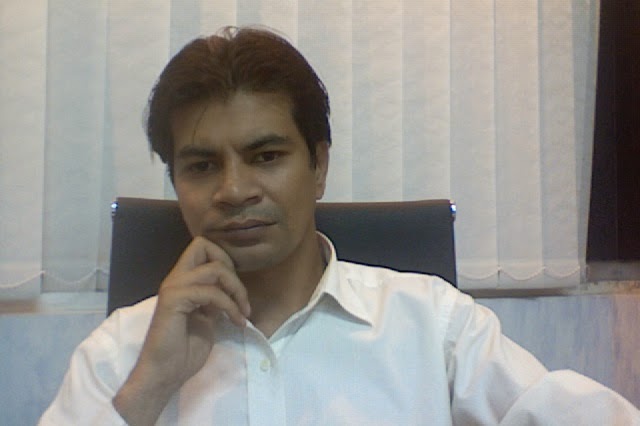Swat is known valley of Kings, and it is said that if one place encompasses among the change among Pakistan, Both Cultural and Violent, that characterize the history of Pakistan it must be Swat Valley, And yet until 1970’s Swat was living anachronism, a land locked in Limbo, timeless, unchanging and undisturbed.

Swat Valley is a part of Khyber Pakhtun Khua ( Former NWFP) province of Pakistan, it stratches from from the Malakand pass above the Peshawar plains, through the foot hills of Hindukush, to the eastern most extent of the highest peaks of this marvelous mountain range.
Most of the swat residents are Pathans, fine featured, skinny look, with their Black Hairs and brown eyes, and every where men & women work on the grain fields together.
You can see lot of Irrigation canals crossing the land of Swat a one can say that a Huge water Buffalo with cleaned back horns flounder in ponds in pools. You can also found road side restaurants or “Dhabas” offering refreshing tea, from huge black stained kettles. A one can also witness smoke coming out from the pillars of stone walled houses of the villages that were made through a hole in a roof, just by seeing it u can easily judge “Something is Cooking”.
Despite the supreme beauty of this valley Khushal Khan Khatak a famous Pastho poet said that “ To give King gladness, life is often so harsh in this valley.

If we talk about the weather it shifts up to 38 degree centigrade in summers and during summers this valley is been threatened by frequent droughts and freak storms, in an area which have only 15 percent of the land available for cultivation, makes farming unpredictable.
According to historians the valley’s human age extends from the first Stone Age , to the Aryan Invasion in 1700 B.C , to the Hindu Empire followed by Muslim rule, this valley witnessed all.
Swat is a true treasure trove of ancient times; The past is so attached to the present so that many families still using those graveyards which they used to use 3000 years back.
This valley has been gifted by a marvelous architecture left by Hindus & Buddhists, which consists of monuments, and knowledge in this fertile valley.
One can witness Swat’s long history of Hindu civilization by watching the rock carvings and ancient forts everywhere, one of the 1208 Hindu vedics from the Rig veda tells about the Suvastu, which is now known as Swat river. Along with that one can find Buddhists Stupa’s, Monasteries, and rock carvings in this valley too.

History tells us from the 5000 years Swat was known as Fuedal Kingdom, since its last ruler deposed peacefully in 1969 through an agreement with the Government of Pakistan, who was known as Wali of Swat.
Way to Swat:
Both Via Air and road connect swat to Islamabad, you can take 35 minutes flight to Swat from Islamabad airport that will land at Saidu Sharif, or you can drive on three roads coming from Islamad all to Saidu Sharif the Capital of Swat, or if you are driving through a Karakoram Highway, near Besham track moves to west over Shangla Pass to KhawazaKhela, this route takes almost ten hours if weather is dry, or one can travel Via Shahbaz garh across the Ambala Pass, to Buner which is across the Karakar Pass this route takes 5 hours to reach, one more route to reach there is the main route from the Mardan over the Malakand pass which takes around 3 & half hours.
Best Time to Visit Swat:
Spring is said to be best time to visit Swat, the valleys are a riot of pastelblossoms and contrasting shades of russet, temperature is ideal and the weather is quite predictable, in winters, its cold and its almost unreacheable to the northern end of Swat which is claimed to be most lovely part of this valley due to snowfall.
Sight Seeing:
If you drive from Mardan up to elevation of 5000 feet towards malakand pass that begins at Durgai, the road twists and turns in an endless series of sudden hairpin stripes, where it tops the Peak you can witness a breat taking view of the southern part of the magical scenic Valley.

The Pass is said to be guarded by Malakand’s fort which acted as a garrison for Sikh infantry which was known as 1000 Sikh infantry which in 1897 defeated the army of 1000 Pastun zealots , killing 4000 of them. This war was known as the most greatest battle ever fought at this place.
The Town of bat khela where Swat leaves its tunnels under the hills and spread out over the series of narrow barrages , marks the start of the descent into Swat.
The First bridge over the river leads to Chakdara the Ancient market, that once waxed rich on the passing trades of great silk route cutting through its main street.

In Chakdaraone can found Buddhist monestries, Stupas, and Shrines all around that features Budhists activities in this area in ancient times, many of the world renownwed Gandhara Scluptures are being moved to Chakdara Museum one mile away from this town.
On Nearby one can witness Damkoth hills, where ruins of larget 8th century Hindu fort which was conqured and razed by Mahmud Ghaznavi in 10th century.
The first occupants of Damkoth hills were Aryans, and after them Monks of first century of Buddhist community resettled them, later in Sixteenth Century Emperor Akbar built huge fort to defend the trade route between Agra and Kabul. Just after 3 centuries colonial administrators built another one on the top of the ruins.
All that now remains and prominent is Churchill’s picket, which is a small observation post where in 1897, Winston Churchill a war correspondent for London Daily Telegrapgh witnessed and wrote reports about the war between Pashtoon Tribesman & Colonial administration.
You can also witness a Budhsit Stupa representing the way to Nirvana on its western base along with Buddhist’s figures including Padmani and the Lotus bearer Bodhisattvas, the Stupa is in Dome shape. There is also a Buddhist Monastery on the Damkot’s 1200 high peak, which tells us the story that Buddhist community survive here for more then 400 years before Hindus Rajputs over ran them.
The proper gatway town of Swat valley is located at Landaki some 12 Km away from town Chakdara, where a police checkpost has been built to register the visitors of Swat.
Almost very near to Landaki there are also 3 Buddhists stupas were found which make them unique as they were dedicated to Buddha, the teacher and Dharma, in Nimogram valley few Km away from Ladaki.
In Nimogram there are some more Stupas are found along with scluptures which are now housed under the Swat Museum located in Swat’s capital Saidu Sharif.
On the Main road near the turn of Nimogram , a one can witness the flat mound of Barikot Hill, where Alexander the Great struggled to captured the ancient town of Bazira. In Bazira a fort was built by 8th century’s Hindu Rulers on the ruins of which one wall, rising 50 feet high can be seen till now, rest of the hill is now used for plough but scenic value of this place is that is verdant plain’s backdrop which is 2810 meter high Mount Ilam a scared peak always encircled by clouds and soothes the eyes of the viewer.

Mount Ilam was known for the long time the home of local gods according to religious ideology of Buddhists, this mountain contains so many names as Tibetians call him Mount Ilo, while a chinese traveller who actually climbed this mount in 630 AD named it Mount Hilo, In Buddhist Ideology this is the place where Lord Buddha sacrificed half of his life to hear the few words of revelation.
The Mystics who embraced his doctrine found heaven in Swat from the persecution of the Aryans and named the Valley Lidyana ( The Garden).
Later the Hindus imprinted it on the name of Vishnu’s incarnation Rama on the rocky summit. And before partition of sub continent Thousands of Hindus came to pay homage at this place, ignoring the hardships of climbing this summit which contains sloppy trek, now passing the track you can also witness the Sufaid mahal, summer house of first Wali of swat.
Along with that one can also visit Buner valley, there is a road to 1300 meters high at Karakar Pass leads south from Barikot ended up at the Valley. In this Valley Akbar the Great suffered a rare defeat and lost around 8000 of his strong army.
Also in this road you can found Gumbat where you can explore the ruins of one of the best-preserved Buddhist shrines in Swat.
Golden Days of Hazara:
If you travel three Km after Barikot on the main highway you will reach to Shingerdar, there u will witness a golden domed Stupa, carrying many colors and paintings representing different symbols, although this Stupa is now becoming ruin because of not taking care of it, the base of this Stupa is made up with many stone carvings, depicting the Buddha’s life. This Stupa represents the Swat’s Buddhist culture in 3rd and 4th centuries.
After that you will find on nearby rocks a vague outline of elephant which according to local historians is meta-morphosis of a white elephant desptached to this spot when the Stupa was under construction with sacred relics of Buddha to be sealed inside. When the Stupa was completed the elephant died and become a rock.
One mile after Stupa, sculpted out of the cliff face adjacent to the main road, is a large, much abused support of Buddha, piles of stone at its base prove to the strength of an old belief that there was great importance to be won in the here after by tossing a rock at the images each time you pass; though any self respecting Buddhist would consider such an act disrespectful.

On the left side of this you will find an natural cave containing the bas-relief of bearded figure, wearing a crown, covered in the traditional costume of Swat’s Kushan rulers, long coat over Cossack trouser and boots, the base on which it stands is decorated by lions and smaller images.
Godara is located almost 6 Km away from all this, which is sadly defaced by the modern drawings which are unmatchable to original ones, this place contains stone carved images of Ox, Dogs, Horses, leopards, other animals and warriors in two wheeler chariots that indicates Aryan’s era in Swat, which was in some 1700 BC.
On the top of this cliff some artists tried to carve Bodhisattva, Padmani the Lotus Bearer and his attendants. Close to Udegram, a one can found a walled castle architecture founded around 1000 BC and it is supposed that it belongs to Hindu Religion, the triangular ruins covers twenty different periods according to archeologists, the ruins contains Main market and shops which are quite identifiable till this age.
If you travel almost 1 Km along the ridge that deides the upper Swat and lower Swat, you will found the walls of old town known as spring which was used to store water and supply it to entire valley, it was channeled along with the series of canals to the storage tank at the base of Six meter wide staircase that leads up to the sanctuary.
There you can also find the Shrine of Khushal Khan Baba, one of Sultan Mahmud Ghaznavi’s men who fell on spot while leading a siege towards the fort held by Raja Gira the Hindu Ruler of that time.
After 6 Km from Udegram town of Mingora is situated, this town having a history of around 2000 old year contains finest golf course, Hotels and an airport. Its been thriving throughout its history and its colorful Bazar offers a vivid mixture of hand crafted jewelry, semi precious stones and clothes. Its twin city is Saidu Sharif the Capital of Swat valley from where Fuedals overlords ruled the valley till 19th century.
The Main Highlights of Swat is Old Palace which is now become a tourist hotel, you can also find a tomb of swat’s last emperor close to this Palace, Another fine building is Swat Museum which contains master pieces of Gandharan Art sculptures and also contains exciting folk history section along with exhibits of local wood carvings, embroidery, and tribal jewelry. This museum is located near one of the most important Buddhist shrines of the world Butkara.
At a place called Butkara II, and at leobanr and Matelai there are around 500 graves of Aryans belongs to 1700 BC discovered by Italian archeologists. There are also ruins of Aryan towns along with Swat river on the road from Mingora dating from 1000 BC.
Sixteen Km from Mingora at Jehanabad there is a huge 4-meter high stone carved Stupa of Buddha where he was said to be preach sermons in his times.

Visiting Swat is a lifetime memorable experience and one must plan to visit this place, which not only reflects beauty but also carries history.












